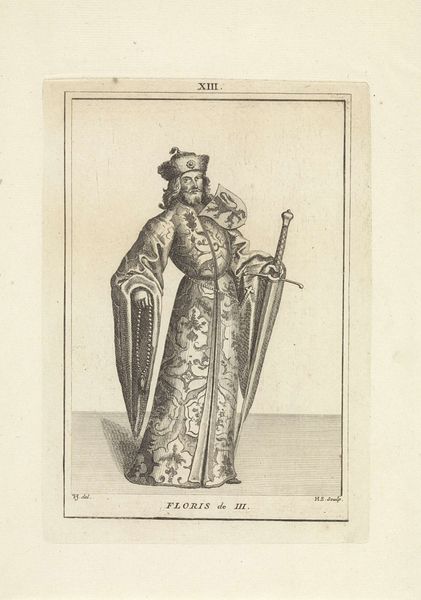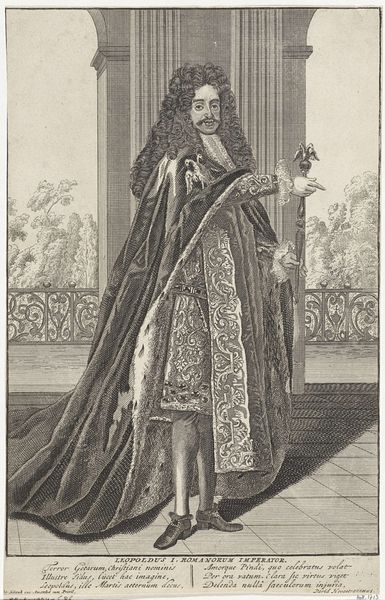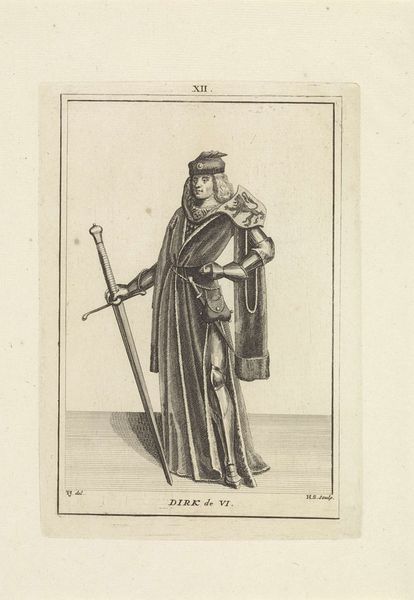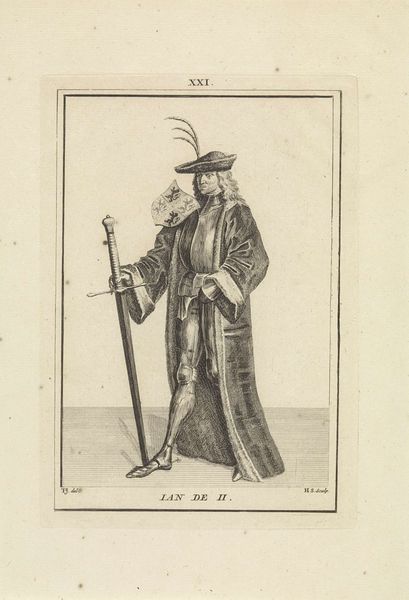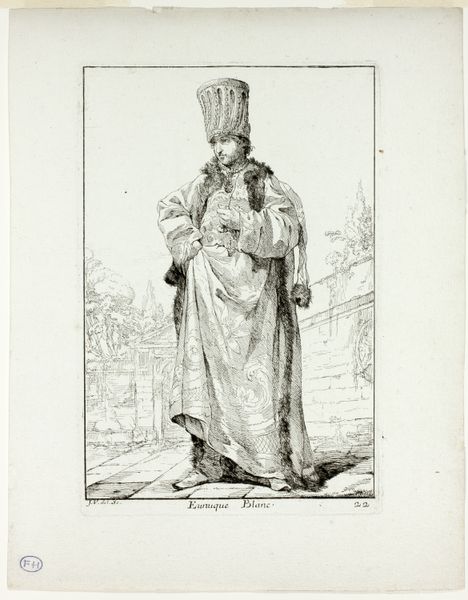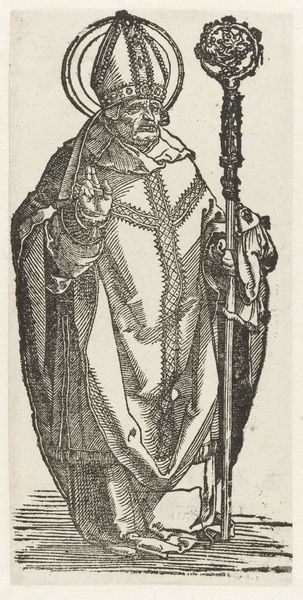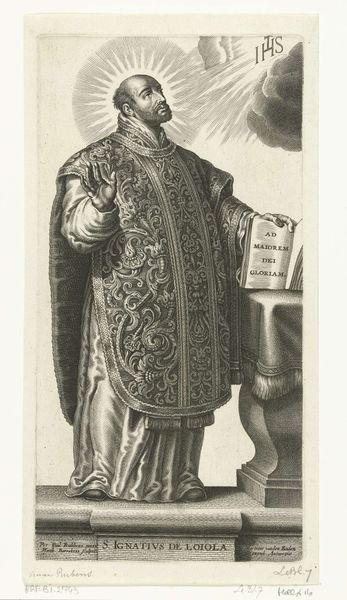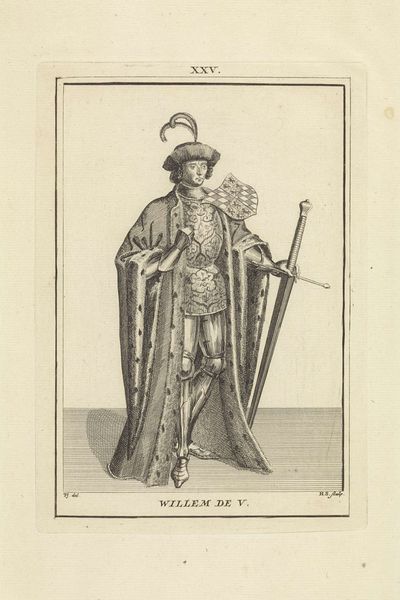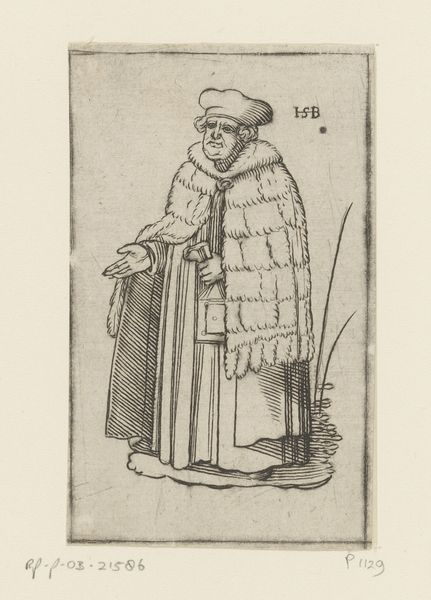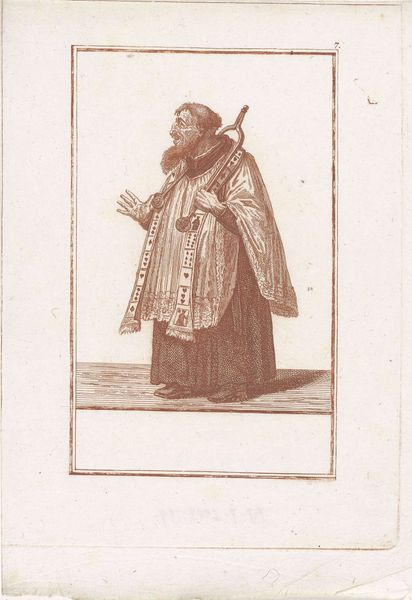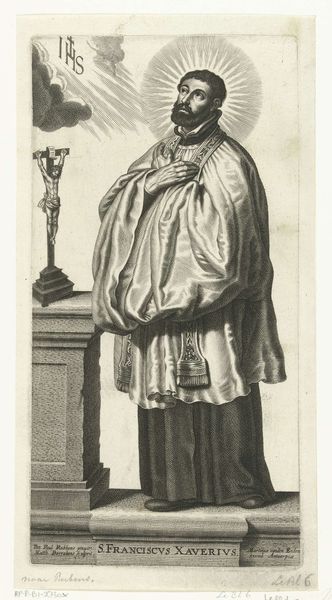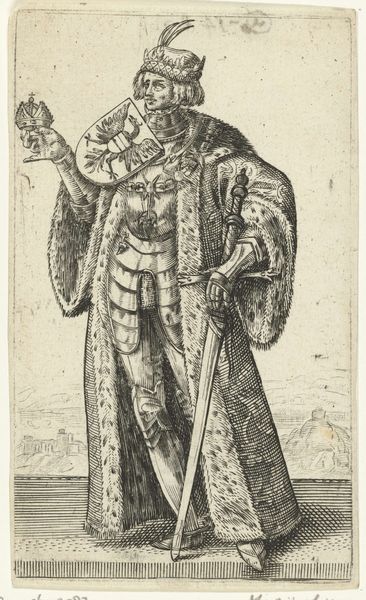
print, engraving
#
baroque
# print
#
old engraving style
#
history-painting
#
engraving
Dimensions: height 192 mm, width 135 mm
Copyright: Rijks Museum: Open Domain
Editor: Here we have Hendrik Spilman's 1745 engraving, "Portret van Maximiliaan I van Habsburg (Rooms-Duits keizer)", housed here at the Rijksmuseum. I'm immediately struck by the formality, the way the subject is posed so rigidly in these elaborate robes, as if staging a certain type of presence. What catches your eye in this image? Curator: It's interesting you mention the robes. Note how meticulously Spilman rendered them; these are potent symbols of authority. Consider the visual weight such attire would have carried then, imbuing Maximilian with legitimacy and continuity through generations. But more than just finery, look closer – can you discern the patterns? These motifs echo familial heraldry and dynastic emblems that tap into a reservoir of collective memory. Editor: Now that you mention it, yes, I can see what seems like floral elements intertwined with perhaps a crest? What would those have signified at the time? Curator: Those symbols functioned as visual mnemonics. Floral patterns could represent peace and prosperity, or even specific territories under Maximilian’s rule. The crest, certainly, served as a direct assertion of lineage and power. Images like these weren’t just portraits; they were carefully constructed narratives. Ask yourself what emotions such an image aimed to evoke in viewers then. Editor: Probably respect, fear, even awe, for the Habsburg line and the Emperor himself? Curator: Precisely. Spilman wasn't merely capturing a likeness, but reaffirming a system of power through symbolic representation. Look, too, at the way he holds his sword; even that detail adds to the imagery of Maximilian's strength and influence. Editor: So much symbolism packed into one engraving! It makes you wonder about the extent to which we still create such curated imagery to convey meaning today. Curator: Indeed! It highlights the enduring power of visual language, reminding us that images have always been imbued with cultural and psychological significance. Something to consider beyond our time here at the Rijksmuseum!
Comments
No comments
Be the first to comment and join the conversation on the ultimate creative platform.
